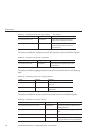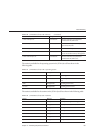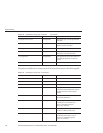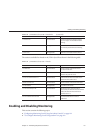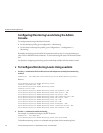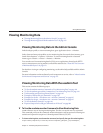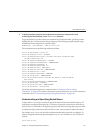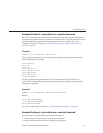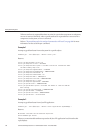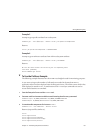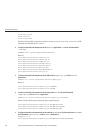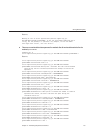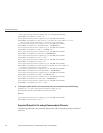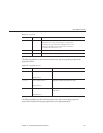
Another example, application, is a valid monitorable object type and is not a singleton. To
address a non-singleton child node representing, for example, the application PetStore, the
dotted name is:
server.applications.petstore
The dotted names can also address specic attributes in monitorable objects. For example,
http-service has a monitorable attribute called bytesreceived-lastsampletime. The
following name addresses the bytesreceived attribute:
server.http-service.server.http-listener-1.
bytesreceived-lastsampletime
The administrator is not expected to know the valid dotted names for asadmin list and get
commands. The list command displays available monitorable objects, while the get
command used with a wildcard parameter allows the inspection of all available attributes on
any monitorable object.
The underlying assumptions for using the list and get commands with dotted names are:
■
Any list command that has a dotted name that is not followed by a wildcard (* ) gets as its
result the current node’s immediate children. For example, list --user adminuser
--monitor server lists all immediate children belonging to the server node.
■
Any list command that has a dotted name followed by a wildcard of the form .* gets as its
result a hierarchical tree of children nodes from the current node. For example, list
--user adminuser --monitor server.applications.* lists all children of applications
and their subsequent child nodes and so on.
■
Any list command that has a dotted name preceded or followed by a wildcard of the form
*dottedname or dotted * name or dotted name * gets as its result all nodes and their children
matching the regular expression created by the provided matching pattern.
■
A get command followed by a .* or a * gets as its result the set of attributes and their values
belonging to the current node to be matched.
For more information, read
“Expected Output for list and get Commands at All Levels” on
page 202
.
Examples of the list and get Commands
This section contains the following topics:
■
“Examples for the list --user admin-user --monitor Command” on page 197
■
“Examples for the get --user admin-user --monitor Command” on page 197
ViewingMonitoringData
SunGlassFishEnterpriseServer2.1AdministrationGuide • December2008196



